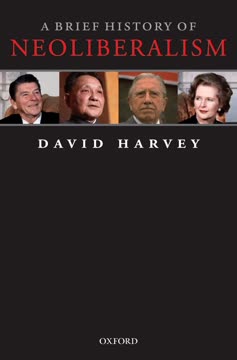Key Takeaways
1. Neoliberalism is a political project to restore class power, not just economic theory.
Neoliberalization has not been very effective in revitalizing global capital accumulation, but it has succeeded remarkably well in restoring, or in some instances (as in Russia and China) creating, the power of an economic elite.
Beyond economic theory. While presented as a utopian theory for maximizing human well-being through free markets, neoliberalism's practical outcome has been the significant restoration or creation of power for economic elites. This suggests its primary function is political, using economic arguments as justification. The theory emphasizes individual freedoms, private property, and free markets, but its implementation consistently benefits a narrow class.
Restoring lost ground. The share of national income held by the top 1% in the US plummeted after World War II but soared back to pre-war levels after neoliberal policies took hold in the late 1970s. Similar trends are seen in Britain and other countries that embraced neoliberalism. This upward redistribution of wealth and income is a persistent feature, indicating a deliberate shift in class power dynamics.
A system of justification. The theoretical framework of neoliberalism, with its focus on efficiency and wealth creation, serves as a powerful ideology. It legitimizes policies like deregulation, privatization, and reduced social spending, even when these policies lead to increased inequality and social hardship. The utopian rhetoric masks the underlying project of class restoration.
2. The crisis of the 1970s threatened economic elites and spurred the neoliberal turn.
The upper classes had to move decisively if they were to protect themselves from political and economic annihilation.
Crisis of accumulation. The 1970s saw a global crisis characterized by stagflation (high unemployment and inflation) and declining profitability. This economic downturn threatened the stability of capitalism and the economic position of the upper classes, whose share of national income and wealth had been constrained by post-war social compromises.
Political threat. Alongside the economic crisis, the 1970s saw the rise of powerful labor movements and social movements demanding greater social justice and state intervention. In many countries, socialist and communist parties gained influence, posing a direct political threat to the power of economic elites.
Decisive action. Faced with both economic and political threats, the upper classes needed a new strategy. Neoliberalism offered a way to restore conditions for capital accumulation and simultaneously curb the power of labor and social movements. This context explains the rapid adoption of neoliberal policies by leaders like Thatcher and Reagan.
3. Neoliberalism was implemented through both authoritarian and democratic means, with periphery experiments influencing the core.
Not for the first time, a brutal experiment carried out in the periphery became a model for the formulation of policies in the centre...
Authoritarian origins. The first significant implementation of neoliberal policies occurred in Chile after Pinochet's brutal coup in 1973. Backed by domestic elites and the US, the military regime violently repressed opposition and implemented free-market reforms guided by "Chicago boys" economists. This experiment provided a model for subsequent neoliberal transitions.
Democratic adoption. In countries like the US and Britain, neoliberalism had to be implemented through democratic processes. This required the active construction of political consent, often by mobilizing minority arguments and appealing to existing cultural values like individual freedom. Leaders like Thatcher and Reagan successfully built coalitions to support their radical reforms.
Policy diffusion. The experiences in places like Chile and later New York City (see next point) demonstrated the feasibility and potential benefits (for elites) of neoliberal restructuring. These periphery experiments provided evidence and strategies that influenced policy formulation in core capitalist countries, showing that brutal measures could be effective models.
4. The New York City fiscal crisis served as an early template for neoliberal restructuring and class power restoration.
This amounted to a coup by the financial institutions against the democratically elected government of New York City, and it was every bit as effective as the military coup that had earlier occurred in Chile.
Urban crisis. New York City faced a severe fiscal crisis in the mid-1970s due to deindustrialization, suburbanization, and expanded public spending. When financial institutions refused to roll over the city's debt, they effectively forced the city into technical bankruptcy.
Financial control. A powerful cabal of investment bankers took control of the city's budget management. They prioritized debt repayment to bondholders over public services and social spending. This led to:
- Wage freezes and cuts for municipal workers
- Reductions in public employment and social provision
- Imposition of user fees (e.g., CUNY tuition)
- Requirement for municipal unions to invest pension funds in city bonds
A template for the future. The NYC crisis established the principle that financial integrity and bondholder returns take precedence over citizen well-being. It demonstrated how fiscal discipline could be used to discipline labor and reduce the power of democratic institutions. This model was later applied at the national level under Reagan and internationally by the IMF.
5. Neoliberalism relies on constructing consent by exploiting desires for individual freedom and consumer choice.
Neoliberal rhetoric, with its foundational emphasis upon individual freedoms, has the power to split off libertarianism, identity politics, multiculturalism, and eventually narcissistic consumerism from the social forces ranged in pursuit of social justice through the conquest of state power.
Ideological appeal. Neoliberalism's emphasis on individual freedom resonates deeply in many societies, particularly in the US. This ideal was used to garner support for policies that reduced state intervention and regulation, framing them as liberation from bureaucratic constraints.
Dividing opposition. By championing individual liberties, neoliberalism could exploit existing tensions between movements focused on individual rights (like some aspects of the 1968 movements, identity politics) and those focused on collective social justice (like labor unions). This helped fragment potential opposition.
Consumer culture. Neoliberalization fostered a market-based populist culture centered on differentiated consumerism and individual libertarianism. The emphasis on consumer choice in goods, lifestyles, and cultural practices became intertwined with the idea of personal freedom, diverting attention from structural inequalities and the restoration of class power.
6. The neoliberal state, despite theory, is activist, biased towards capital, and often anti-democratic.
The juridical trick of defining corporations as individuals before the law introduces its own biases...
Theory vs. practice. Neoliberal theory posits a minimal state focused only on enforcing contracts and property rights. In practice, the neoliberal state is highly interventionist, actively creating markets, enforcing competition rules, and promoting a "good business climate."
Systematic bias. The state consistently favors the interests of capital over labor and the environment. This is seen in:
- Weakening unions and promoting labor market flexibility
- Rolling back environmental regulations
- Prioritizing financial stability and bailing out banks at public expense
- Providing subsidies and tax breaks to corporations
Anti-democratic tendencies. Neoliberalism is inherently suspicious of democracy, viewing majority rule as a threat to individual (property) rights. It favors governance by elites and experts, insulating key institutions like central banks from democratic pressure. This leads to a decline in representative democracy and increased reliance on executive orders and judicial decisions.
7. Financialization and accumulation by dispossession are key mechanisms for upward wealth redistribution under neoliberalism.
Neoliberalization has meant, in short, the financialization of everything.
Rise of finance. The financial sector has become increasingly dominant under neoliberalism, with rapid growth in speculative activities and complex financial instruments. This shift has concentrated wealth and power in the hands of financiers and large corporations.
Accumulation by dispossession. Beyond traditional exploitation of labor in production, neoliberalism relies on practices that dispossess populations of assets and rights. These include:
- Privatization of public assets (utilities, social housing, services)
- Commodification of land and expulsion of peasants
- Extraction of rents from intellectual property rights
- Use of debt and financial crises to transfer wealth from debtors to creditors
State's role. The state is crucial in facilitating these processes, using its legal and coercive powers to enforce privatization, deregulate finance, manage crises to benefit creditors, and suppress resistance. This transfers assets from public and popular realms to private, class-privileged domains.
8. Uneven geographical development and financial crises are integral to neoliberal expansion and dispossession.
The extraction of tribute via financial mechanisms is an old imperial practice.
Competitive pressure. Neoliberalization has intensified competition between territories (states, regions, cities) to attract mobile capital by creating favorable business climates. This pressure encourages widespread adoption of neoliberal policies.
Crises as opportunities. Financial crises, which became more frequent and contagious under deregulated finance, serve as mechanisms for accumulation by dispossession. The Wall Street–Treasury–IMF complex has orchestrated bailouts and structural adjustment programs that force indebted countries to sell assets cheaply and transfer wealth to international creditors.
Global tribute. This process results in a flow of tribute from the periphery and semi-periphery to the core financial centers, particularly the US. This extraction of wealth from the rest of the world has significantly contributed to the restoration of class power in countries like the US.
9. China's unique path combines market reforms, authoritarianism, and integration into global neoliberalism, leading to rapid growth and inequality.
China, we may conclude, has definitely moved towards neoliberalization and the reconstitution of class power, albeit ‘with distinctly Chinese characteristics’.
Market socialism. China's reforms since 1978 introduced market forces and opened the economy to foreign capital, but under the strict control of the Communist Party. This avoided the shock therapy disasters seen elsewhere but led to a unique hybrid system.
Growth and inequality. China has achieved spectacular economic growth and poverty reduction for many, but also extreme social inequality. The gap between urban and rural incomes is vast, and wealth has concentrated rapidly through:
- Privatization of state assets
- Real estate speculation
- Exploitation of migrant labor
- Corruption and privileged access to resources
Authoritarian neoliberalism. The Chinese state maintains authoritarian control, repressing labor unrest and dissent, while facilitating capitalist accumulation. Reliance on foreign direct investment and integration into the global market (especially after WTO entry) has deepened its neoliberal characteristics, albeit with strong state manipulation and nationalist undertones.
10. Neoliberalism's global record on growth and well-being is dismal, but it has succeeded in concentrating wealth.
Its actual record turns out to be nothing short of dismal.
Failed growth engine. Global economic growth rates have been significantly lower since the 1980s compared to the post-war embedded liberalism era. Many regions, particularly in Latin America and Africa, experienced stagnation or decline under neoliberal policies.
Increased inequality. While some countries like China and India have seen growth, it has been accompanied by soaring inequality. Globally, the income gap between the richest and poorest has widened dramatically.
Elite success. Despite its poor record on overall growth and well-being, neoliberalization has been highly successful in restoring or creating wealth and power for economic elites worldwide. This suggests its primary objective was never broad prosperity but class advantage.
11. The commodification of land, labor, and money under neoliberalism causes profound social dislocation and environmental degradation.
To allow the market mechanism to be sole director of the fate of human beings and their natural environment... would result in the demolition of society.
Fictitious commodities. As Karl Polanyi argued, treating land, labor, and money as mere commodities subject solely to market forces is a dangerous fiction. These are not produced for sale in the market and are deeply embedded in social and ecological systems.
Social demolition. Unfettered commodification leads to:
- Social dislocation and insecurity for labor (job insecurity, loss of benefits)
- Degradation of the natural environment (resource depletion, pollution)
- Financial instability and crises (speculation, debt traps)
Loss of protections. Neoliberalism strips away the social and cultural institutions that historically protected people and nature from the destructive forces of the market. This leaves individuals exposed to acute social dislocation and environmental ruin.
12. The inherent instability of neoliberalism and rising contradictions point towards potential crisis and the rise of neoconservative authoritarianism.
Between two rights... force decides.
Internal contradictions. Neoliberalism contains inherent tensions, such as the conflict between market freedoms and the need for state intervention, or between individual liberty and the concentration of corporate power. These contradictions lead to instability and crises.
Fiscal imbalances. The current global economy is marked by significant imbalances, particularly the massive deficits in the US and excess capacity in China. These are signs that the neoliberal model is failing to sustain accumulation and could lead to a major crisis.
Authoritarian turn. Faced with instability and potential loss of control, ruling elites may resort to more overt authoritarianism, as seen in the rise of neoconservatism in the US. This involves increased militarization, suppression of dissent, and the assertion of a narrow, often nationalist and moralistic, agenda to maintain power. The conflict over competing conceptions of rights—those of capital versus those of people and nature—is ultimately decided by power and force.
Last updated:
FAQ
What is A Brief History of Neoliberalism by David Harvey about?
- Comprehensive overview: The book traces the origins, rise, and global spread of neoliberalism as a political-economic project.
- Focus on class power: Harvey argues that neoliberalism is primarily about restoring elite class power through market-oriented reforms and state restructuring.
- Global impact: It examines how neoliberalism has reshaped economies, societies, and governance worldwide, with special attention to uneven development and key case studies like China.
Why should I read A Brief History of Neoliberalism by David Harvey?
- Critical perspective: The book challenges mainstream narratives, exposing the contradictions and failures of neoliberalism.
- Historical and global analysis: Harvey provides a detailed account of neoliberalism’s development, impacts, and variations across different countries.
- Relevance to current issues: The analysis connects neoliberalism to contemporary problems such as inequality, financial crises, environmental degradation, and the erosion of democracy.
What are the key takeaways from A Brief History of Neoliberalism by David Harvey?
- Neoliberalism as class project: Neoliberalism primarily serves to restore and consolidate the power of economic elites, not just promote free markets.
- State transformation: The neoliberal state is reconfigured to protect market freedoms and capital interests, often at the expense of labor and social welfare.
- Uneven outcomes: Neoliberalism’s spread is geographically uneven, producing diverse results in different countries and deepening social and economic inequalities.
How does David Harvey define neoliberalism in A Brief History of Neoliberalism?
- Core definition: Neoliberalism is a theory of political-economic practices that prioritizes individual entrepreneurial freedoms, strong private property rights, free markets, and free trade.
- Role of the state: The state’s function is limited to creating and preserving the institutional framework for markets, enforcing property rights, and guaranteeing money quality.
- Market expansion: Neoliberalism seeks to extend market mechanisms into all areas of life, emphasizing contractual relations and maximizing market transactions.
What historical events marked the rise of neoliberalism according to David Harvey?
- Late 1970s turning point: Key events include Deng Xiaoping’s reforms in China, Paul Volcker’s monetary policy in the US, and the elections of Margaret Thatcher and Ronald Reagan.
- Crisis response: These leaders responded to the economic crises of the 1970s by promoting neoliberal policies like deregulation, privatization, and weakening labor power.
- Global diffusion: These changes in major economies set off a worldwide shift toward neoliberalism, transforming political and economic landscapes.
How does David Harvey explain the role of class power in neoliberalism?
- Restoration of elite power: Neoliberalism is a political project aimed at restoring the economic power of elites and upper classes.
- Evidence of inequality: Data show soaring income and wealth concentration among the top 1% and 0.1% in countries like the US, Britain, and France since the late 1970s.
- Class reconfiguration: Neoliberalism has redefined class structures, merging ownership and management, and increasing the dominance of financial capital over production.
How was political consent for neoliberalism constructed, according to David Harvey?
- Ideological campaigns: Business elites and neoliberal intellectuals organized think tanks, media, and academic networks to promote neoliberal ideas as the exclusive guarantor of freedom.
- Cultural appeal: Appeals to individual freedom and entrepreneurial liberty masked the restoration of class power, making neoliberalism palatable to a broad public.
- Political strategy: In democracies, neoliberalism advanced through electoral politics, alliances with conservative movements, and the repression or co-optation of labor and social movements.
What is the neoliberal state and how does it function in theory and practice, according to David Harvey?
- Theoretical role: The neoliberal state is supposed to protect private property, enforce contracts, guarantee market functioning, and minimize intervention beyond creating market conditions.
- Practical contradictions: In reality, neoliberal states often intervene to protect financial institutions, suppress labor rights, and create favorable business climates, sometimes contradicting neoliberal ideals.
- Authoritarian tendencies: The state may resort to coercion and limit democratic governance to maintain market order and elite power, leading to tensions between freedom and control.
How does neoliberalism develop unevenly across different countries and regions, as described by David Harvey?
- Varied adoption: Countries adopt neoliberal reforms partially and unevenly, influenced by local class forces, institutional legacies, and political struggles.
- Examples of divergence: The US and UK pursued aggressive neoliberal reforms with rising inequality, while countries like Sweden and Japan resisted or modified neoliberalism with stronger social protections.
- Global competition: Neoliberalization is driven by competition between states and regions to create attractive business climates, but outcomes vary widely, with some countries experiencing crises and others growth.
How does David Harvey describe “neoliberalism with Chinese characteristics”?
- Hybrid model: China’s economic reforms since 1978 combine market liberalization with authoritarian state control, creating a unique form of state-manipulated market economy.
- Gradual reform: Unlike shock therapy in Russia, China pursued gradual reforms, maintaining state ownership while allowing private enterprise and foreign investment under strict supervision.
- Class and social effects: The reforms produced rapid growth and rising inequality, with a growing rural-urban divide and the emergence of capitalist class power, all managed within the Communist Party’s political monopoly.
What is “accumulation by dispossession” in the context of A Brief History of Neoliberalism by David Harvey?
- Definition: Accumulation by dispossession refers to the ongoing process where neoliberalism expands capital accumulation by privatizing public assets, commodifying commons, and enforcing debt regimes.
- Mechanisms: This includes privatization of social welfare, land grabs, financial speculation, debt crises, and the erosion of labor and environmental protections, often backed by state power.
- Consequences: These processes deepen social inequalities, undermine democratic governance, fuel social unrest, and perpetuate environmental degradation, revealing neoliberalism’s exploitative core.
What are the social and environmental consequences of neoliberalism according to David Harvey?
- Rising inequality: Neoliberalism has led to significant income and wealth disparities within and between countries, deepening urban-rural and regional divides.
- Labor market flexibilization: The dismantling of social protections and the rise of precarious, low-wage, and informal employment have created a large, disposable workforce vulnerable to exploitation.
- Environmental degradation: Neoliberal policies prioritize short-term profits and market mechanisms, leading to over-exploitation of natural resources, pollution, and climate change, while deregulation undermines environmental protections.
Review Summary
A Brief History of Neoliberalism offers a critical examination of neoliberal economic policies and their global impact. Readers praise Harvey's accessible writing and comprehensive analysis, highlighting his argument that neoliberalism serves to concentrate wealth and power among elites. The book explores case studies from various countries, demonstrating how neoliberal practices have led to increased inequality and social issues. While some critics find the work biased, many appreciate its insights into the historical development and consequences of neoliberalism, particularly its prescient predictions of economic crises and political shifts.
Similar Books
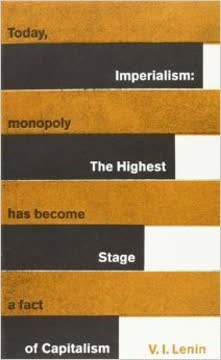
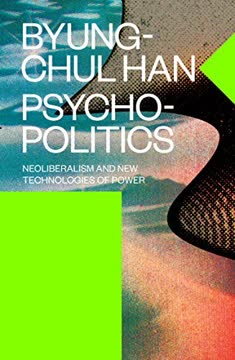


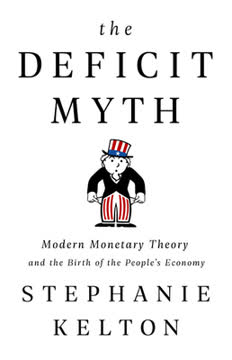
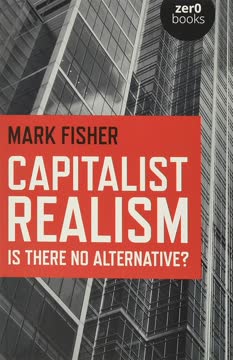
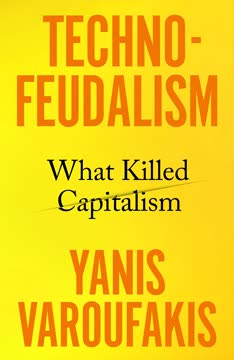
Download PDF
Download EPUB
.epub digital book format is ideal for reading ebooks on phones, tablets, and e-readers.
